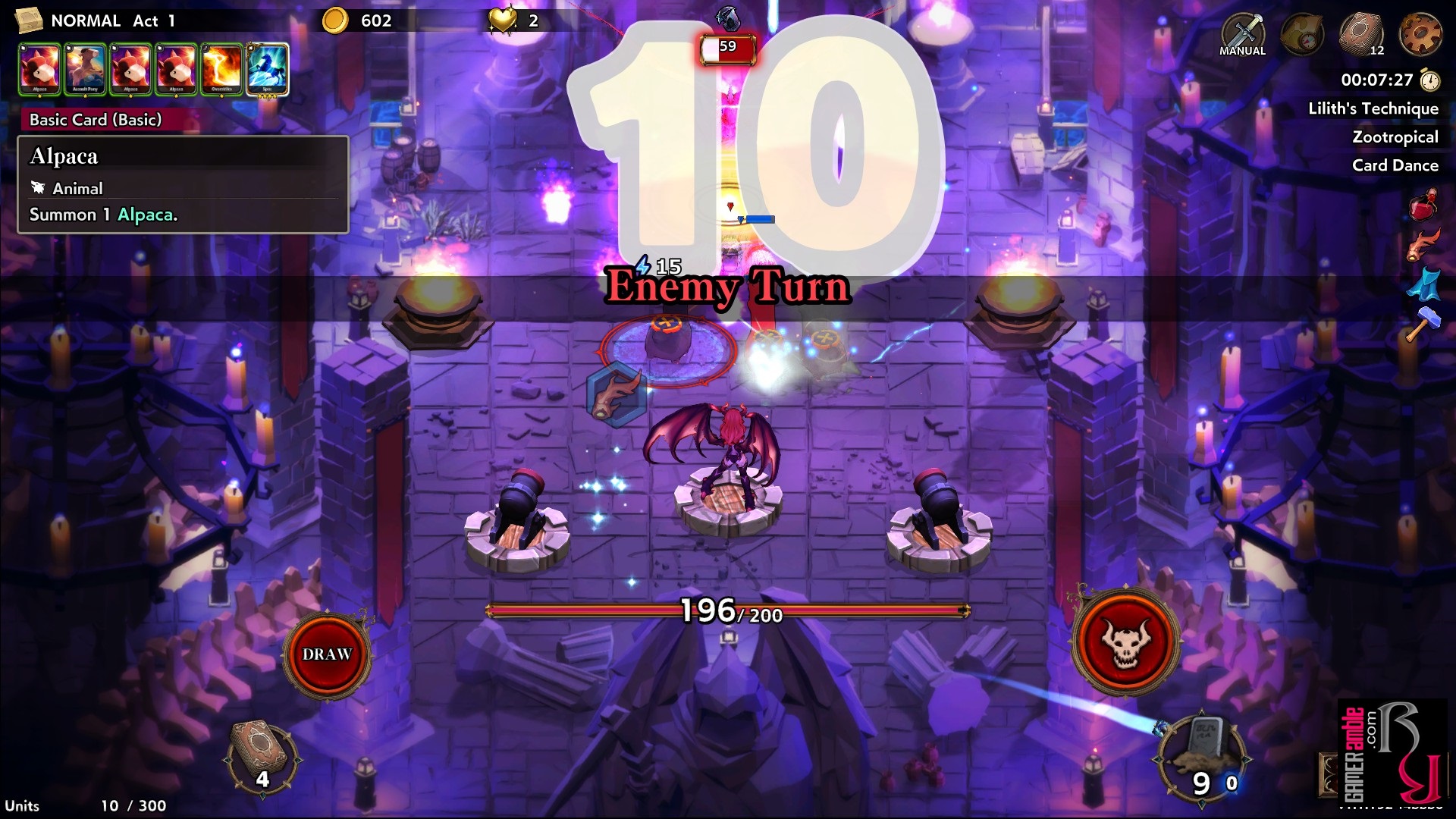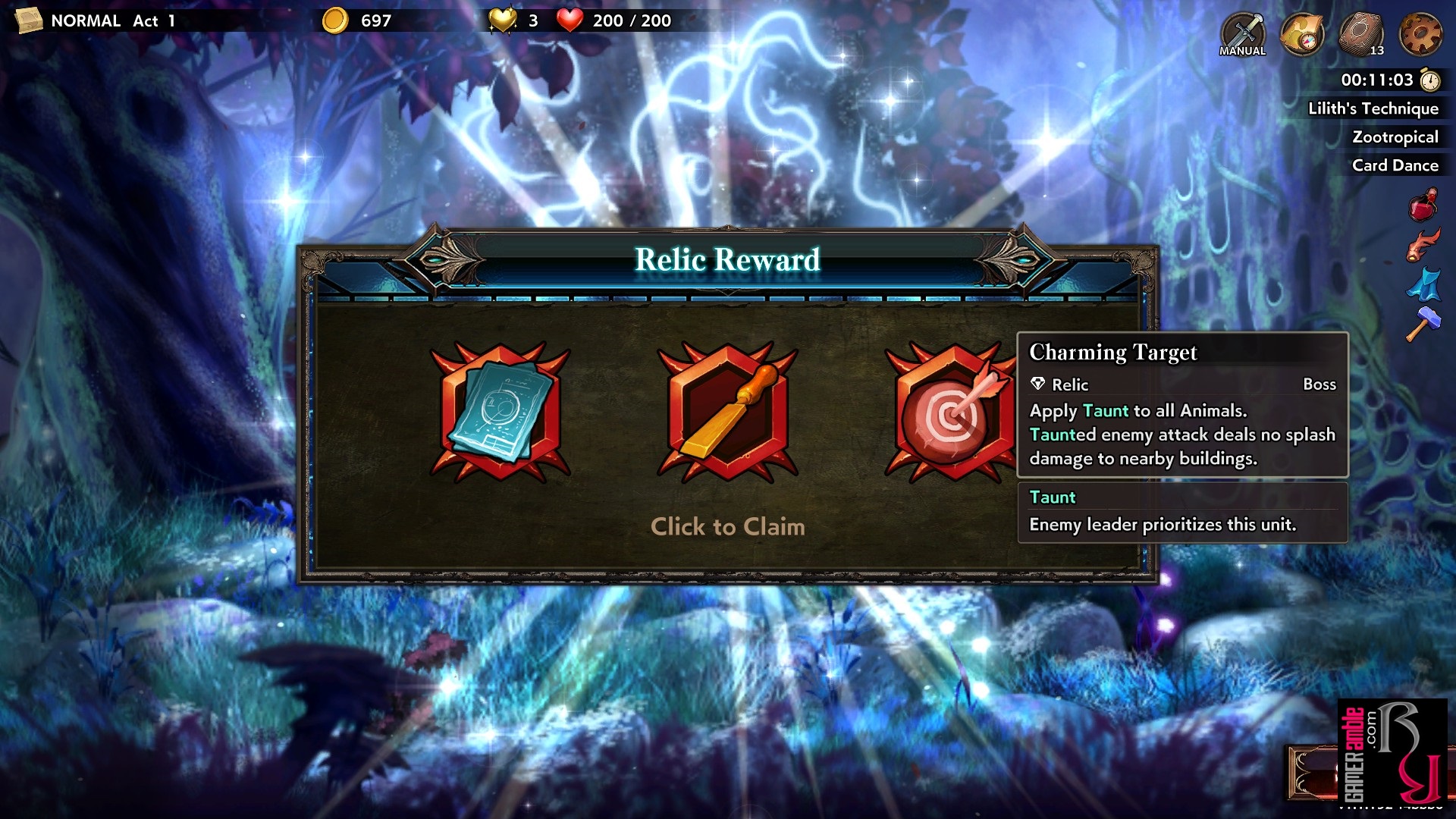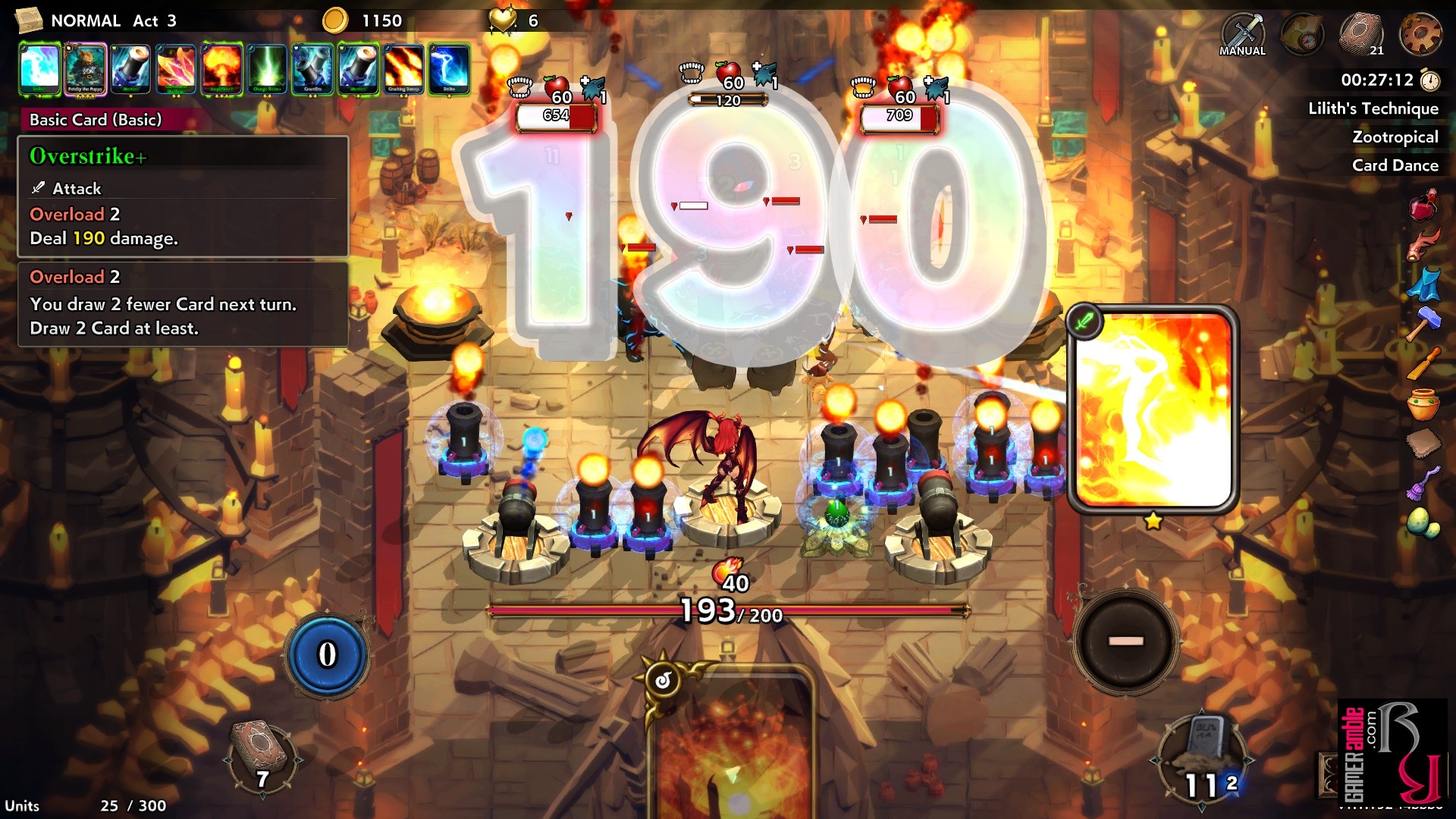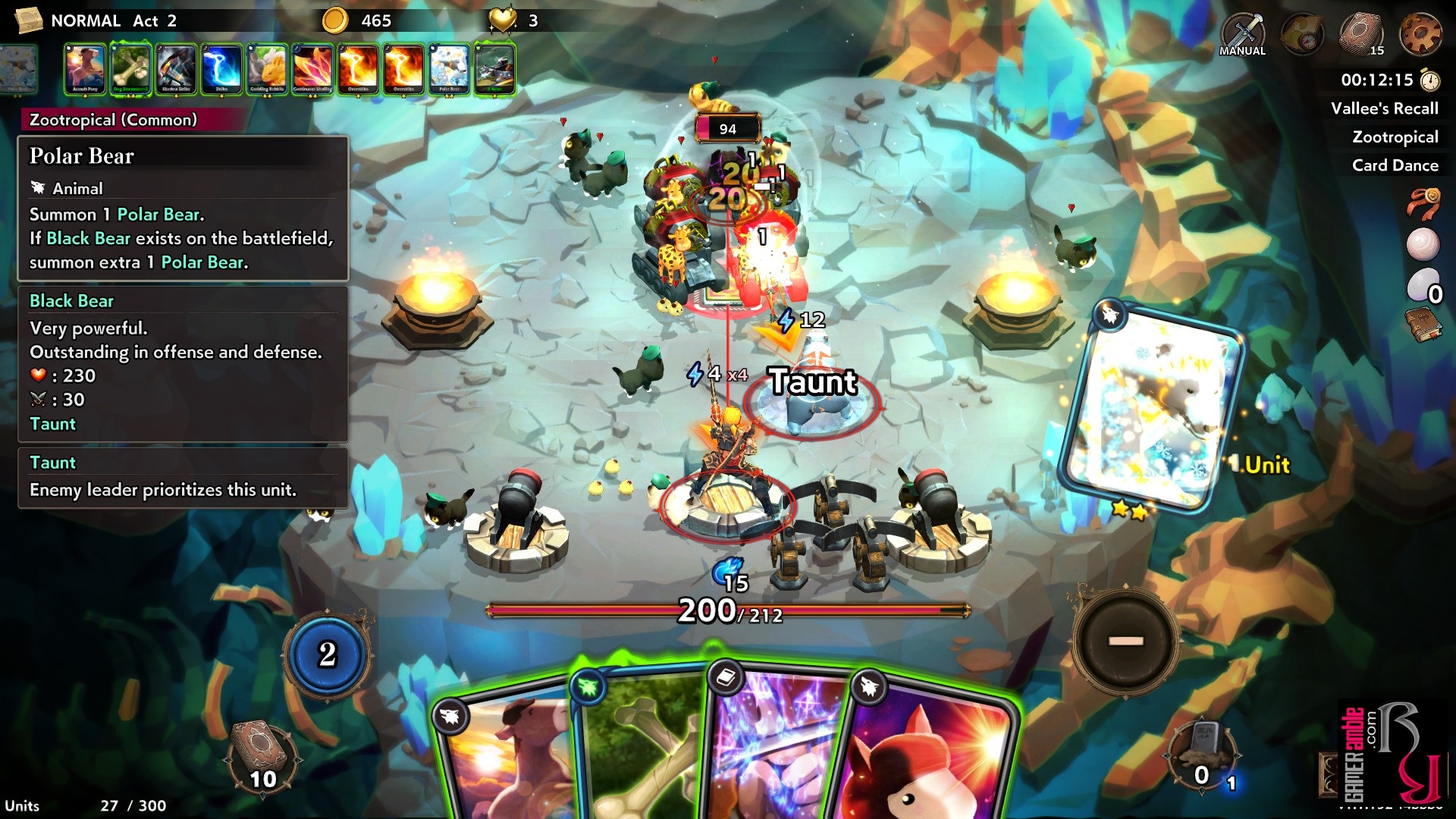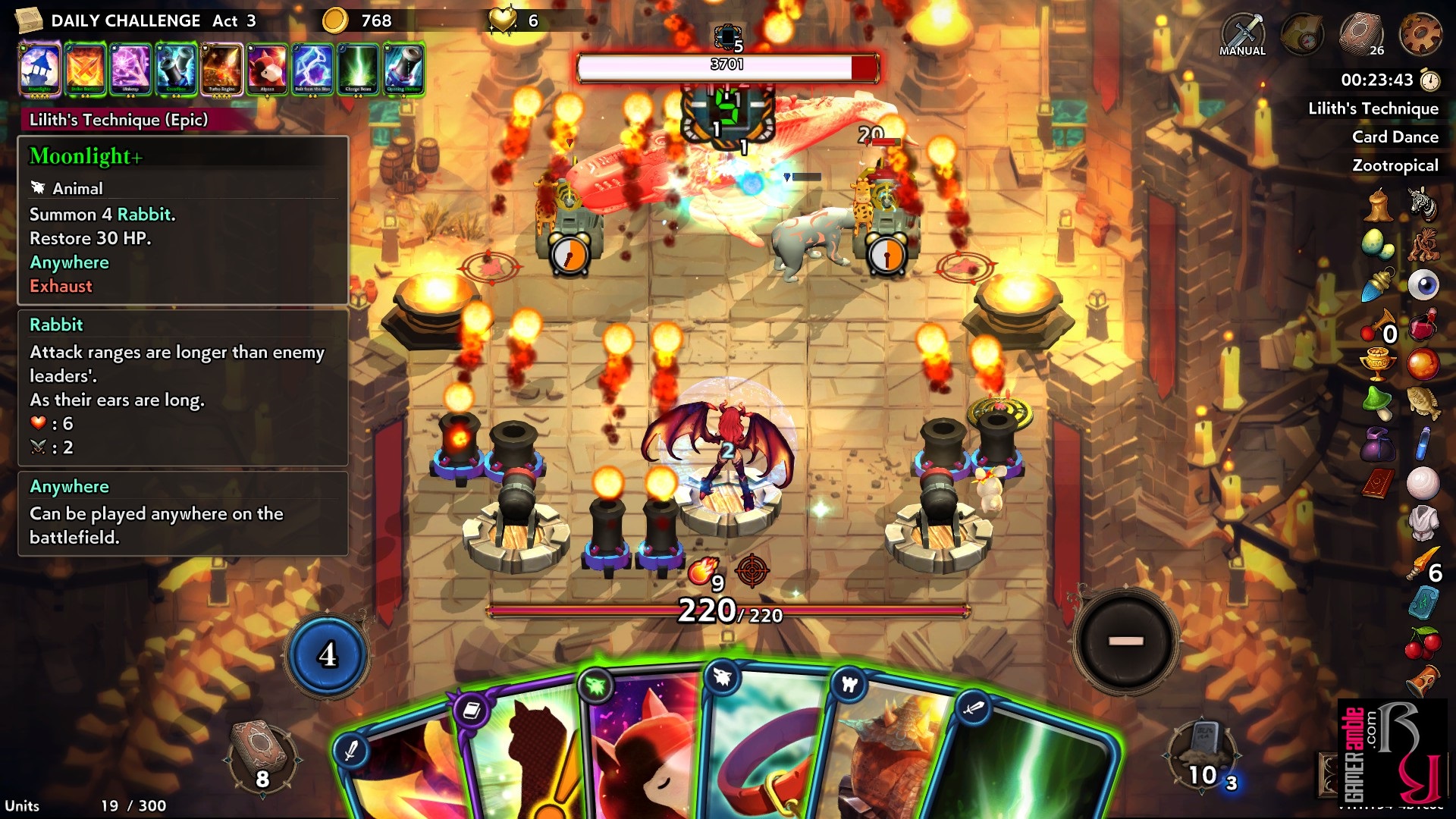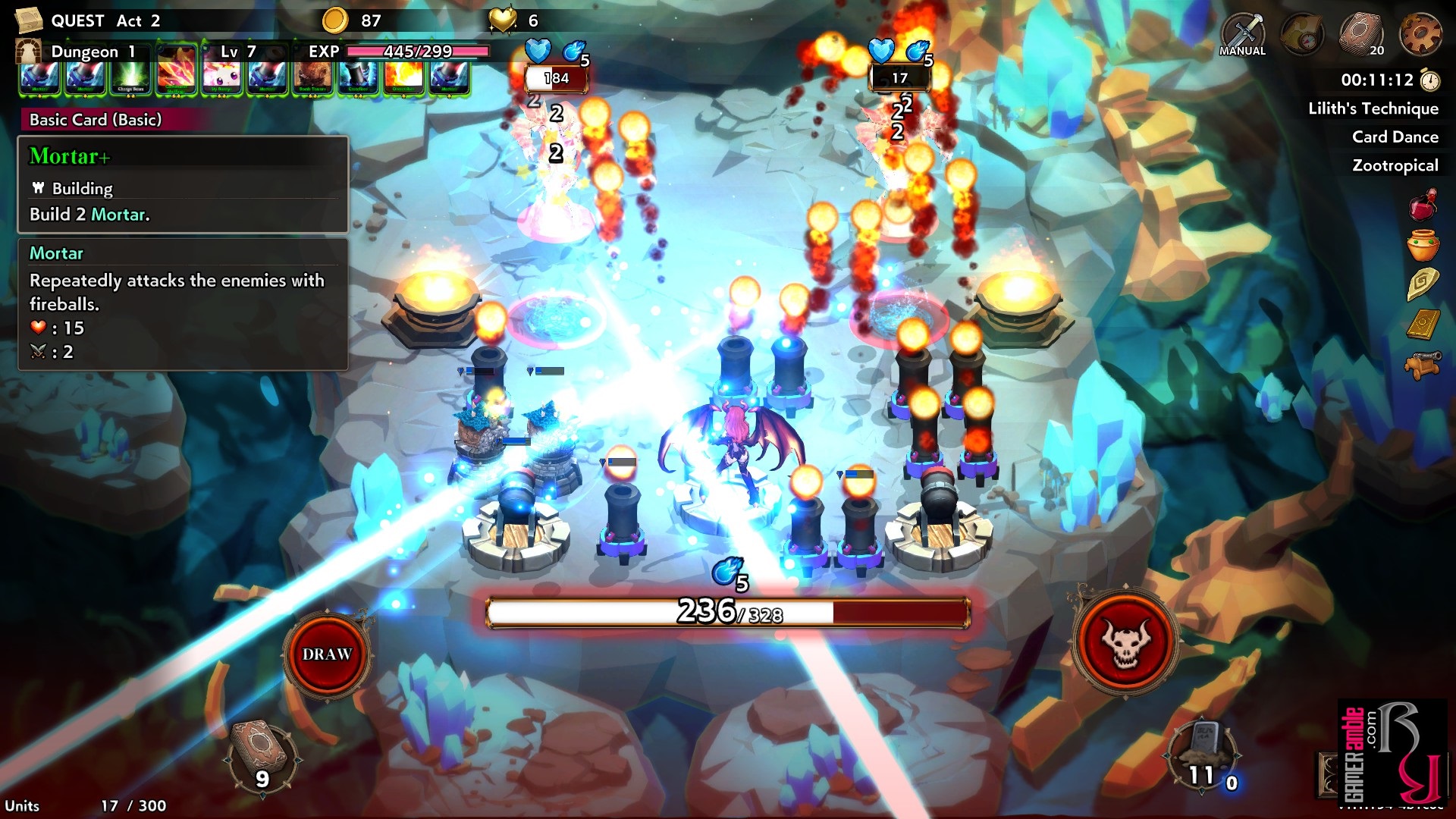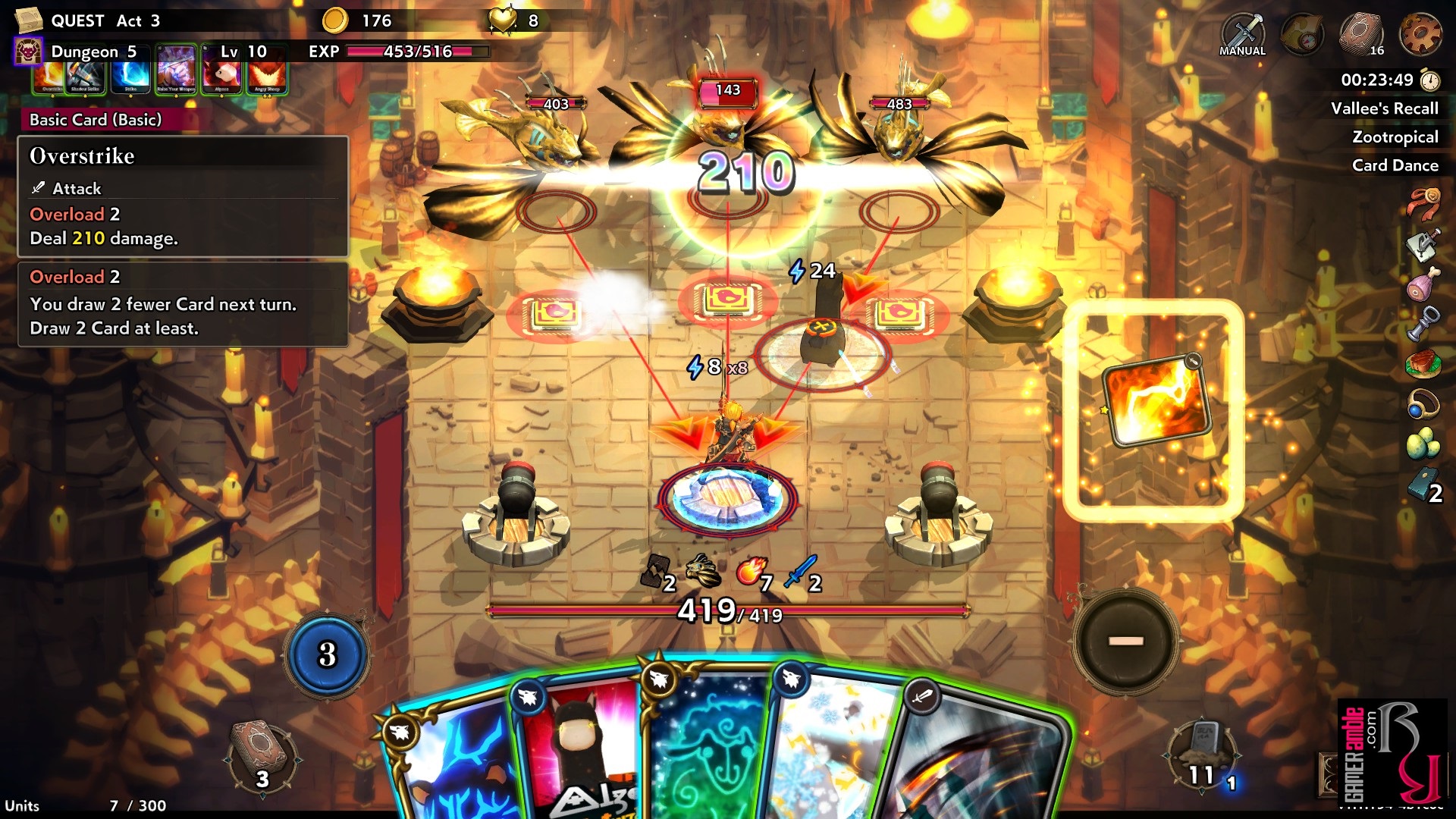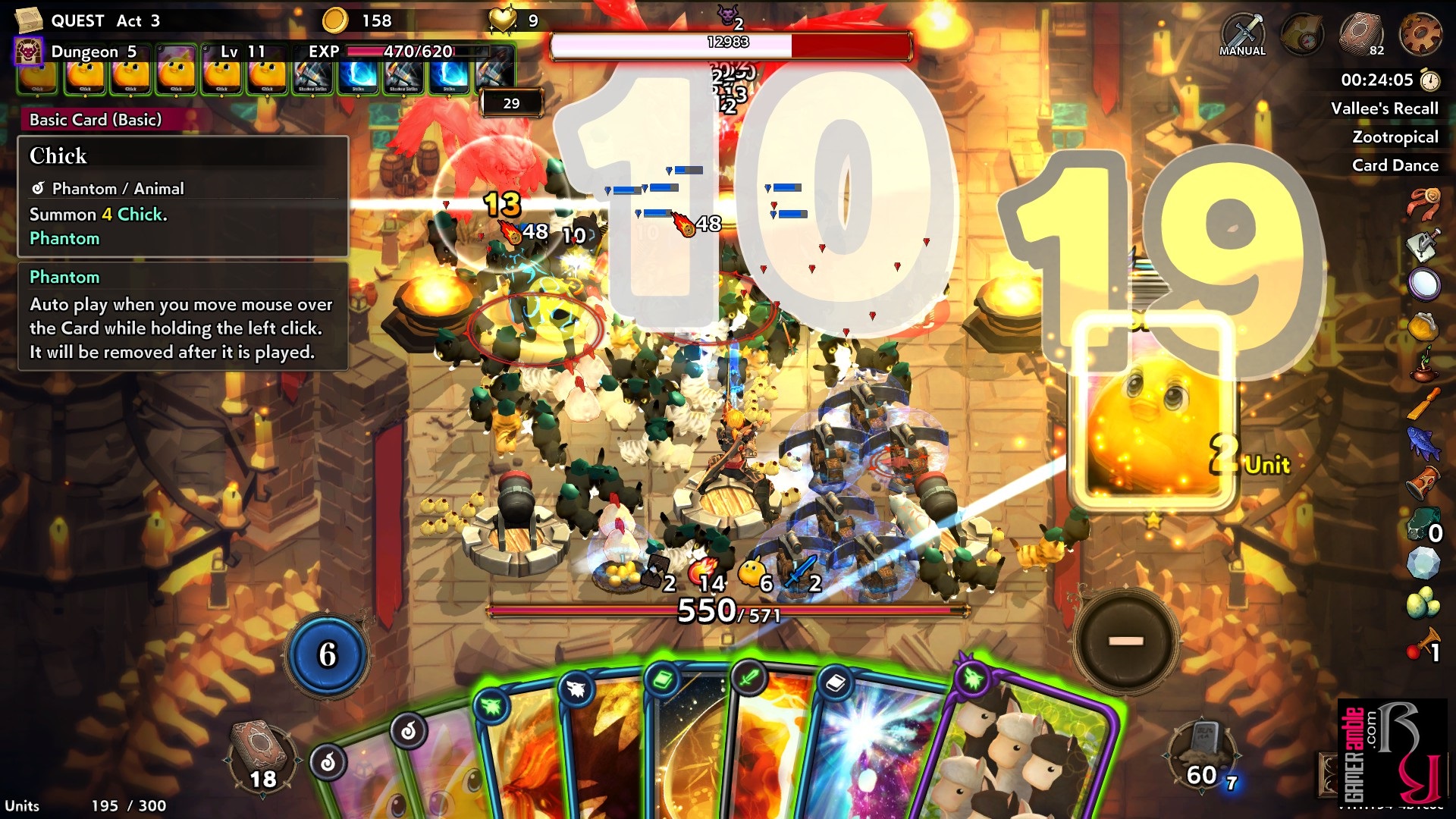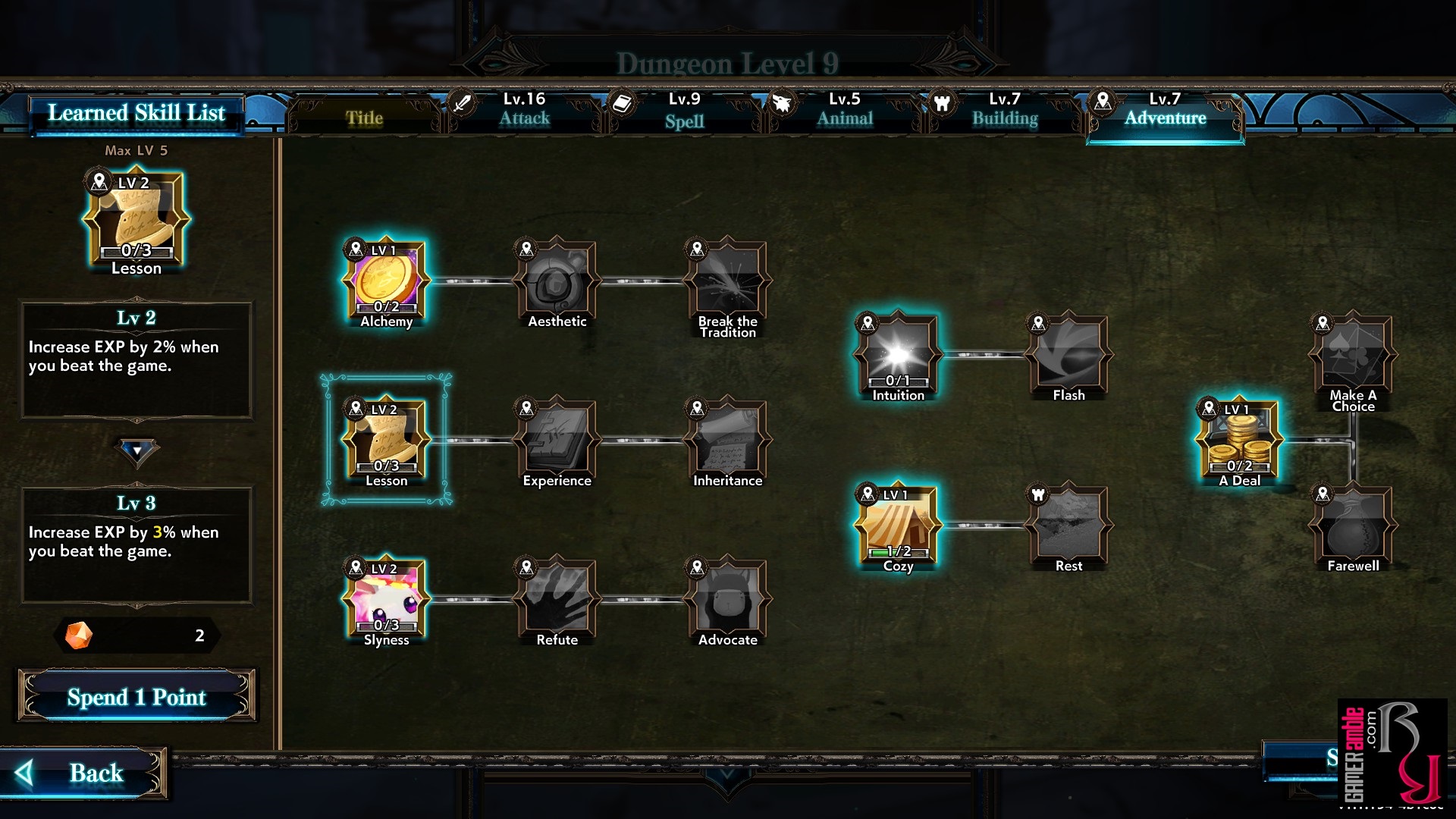Overdungeon 超载地牢
Developer: POCKET PAIR, Inc. | Publisher: Leiting Games | Release Date: 2019 | Genre: RPG / Strategy / Indie | Website: N/A | Purchase: Steam
What does a girl who is embarrassed about her outfit after she was unexpectedly turned into a vampire, a soldier who traded his memory in return for power and the incarnation of Schrödinger’s cat have in common? Well, nothing apart from the fact that they are the three playable characters in the rogue-like card battle game, Overdungeon, by Pocket Pair Inc. Each of these characters has their own preferred card deck, and players can select an additional two decks to take into battle with them. From there, it is the usual battle against enemies and bosses while stopping for a bit of shopping and rest along the way. However, one of the things that set Overdungeon apart from other titles in the genre is that battles take place in near real-time, which means you need to think on your feet to survive.
Overdungeon features a number of different game modes, but the basic structure remains the same for all of them. To defeat your opponent, you need to reduce their health points down to zero before they have a chance to do the same to you. Normal battles generally don’t pose too much of a problem for your hero, but “elite” battles step things up with more powerful opponents. While it might be tempting to avoid the harder battles, these elite opponents also reward you with relics if you defeat them, which makes them tempting targets. Finally, you’ll encounter three bosses over the course of each playthrough and all of them have their own tricks up their sleeves.
Choosing your character also influences your playing style as they each have their own strengths and weaknesses. For example, the vampire girl Lillith has a pack that is filled with sparks, beams, fireballs, and other direct attacks. On the other hand, the soldier Valley prefers shadow strikes, armored elephants and watchtowers in his deck. Then there is Sugar, who delights in attacking with dogs, kittens, mice and putting down traps everywhere. From the extra two packs that players can choose, there is the “Zootropical” pack for those who favor more animals, the “Card Dance” pack that is a little more direct attack oriented and the “Factorie” pack that has an emphasis on buildings and missiles. The game features more than 100 cards, so these packs do not contain all the cards on offer either. You’ll also encounter shops as you make your way through the dungeons where cards like the “Giraffe Tank” can be bought with the gold you have looted. The developers have also added a new “Animal Village” pack in a recent update, so they are clearly not done with expanding the game.
The cards in Overdungeon are split into attacks that deal direct damage to enemies, animals that are released on the battlefield to attack the enemy or defend against opposing animals, buildings that can offer offensive or defensive bonuses and powers, as well as spells that can bestow various advantages. In addition, there are trap cards that can be placed on the playing field to be triggered by animals stepping on them. Another element that plays an important role in Overdungeon is relics, which comes in basic, common, rare, epic, and legendary varieties. Relics can drastically change how fights are resolved, which keeps things interesting. Some relics increase the odds of things like cards returning to your hand after being played or getting upgraded at the end of combat, while others bestow bonuses, such as summoning extra animals for or even changing some animals into others. The result is matches that are usually chaotic, often unpredictable and mostly a lot of fun.
Before trying out the various modes in Overdungeon, it is recommended that new players check out the tutorial first for a rundown of how to play the game. It’s not a very complicated game, but some elements can be a little confusing until you’ve played a few rounds. Next up should be the “Basic Dungeon” which can be played on three difficulty settings. After completing the basic dungeon players can then try out the “Arena” to challenge enemies of different difficulties using a crafted deck, take on the daily challenge, season dungeon, or Quest mode. The latter is the most interesting as it features never-ending battles, but players earn experience and can upgrade their skill tree for improvements to the attack, spell, animal, building, and adventure categories.
Since Overdungeon is a card game at heart there is no real “exploration” of dungeons. Instead, players are presented with a grid containing icons that represent different elements. These can be a rest site, shop, random event, treasure chest, normal battle, or elite battle and there are usually three or four of these per row, representing the dungeon floor. Players can only pick one of these and completing it then moves them on to the next row to make a new choice. Since these “dungeons” are randomly generated you never know if you are going to get a string of battles in a row or luck out and have nothing except rest sites, shops, and beneficial random events for a while. Rest sites allow your character to restore their health, which is extremely useful as it is not automatically replenished after a battle. Resting also rewards players with an extra life, allowing them to continue the battle with full health after they are defeated by an opponent. Players can also choose to forge all these benefits when they reach a rest stop and opt to upgrade one of the cards in their deck instead.
In terms of actual gameplay, Overdungeon is extremely chaotic and also very addictive. We can’t say that the game is particularly balanced as there were times where we breezed through battles thanks to an awesome combination of cards while other times we could barely make a dent in an opponent’s health bar. It all comes down to the cards in your deck and the relics that you find, which might make things a little too random for some players. As with most games of this type, you have to select which of the cards in your hand to play each turn. If you are down to two cards in your hand or the timer runs out, then your opponent gets a turn to play their cards. The number of cards in your hand also depends on a variety of factors, such as having played powerful cards with “overload” penalties in the previous turn. Successfully defeating an opponent rewards you with gold as well as the option to choose one of three cards, although you can skip these if you want to keep your deck uncluttered.
Overdungeon has decent visuals, but thanks to the sheer amount of animals and spells flying around each battlefield, it can look a little chaotic at times. The game has a feature to limit the number of creatures and tampering with this could cause a crash if you are not careful. The designs of all the enemies and animals are pretty neat and the 2D artwork for the cards are also pretty cool. The game doesn’t have a lot of visual options to tweak as you can only change the resolution or select to play in windowed or fullscreen mode. The music for Overdungeon is not bad, but some of the sound effects can be a bit annoying if you end up in a battle where there are tons of things being summoned at the same time. Thankfully the background music and sound effect volumes can be adjusted independently. The game is controlled via mouse and we didn’t encounter any issues apart from the fact that performance can become sluggish during particularly chaotic battles. One more thing worth mentioning is that the developers of Overdungeon are not native English speakers, so the translation is a little rough in places. While not bad enough to hamper the gameplay in any way, the translation quality could definitely be improved.
Although Overdungeon is not the first title to combine rogue-like elements with the tower defense and card game genres, it is one of the more addictive ones that we have played. Because of the random nature of the game, not every run is going to be fun and some of the elements are definitely annoying, but it still managed to keep us hooked for a long time and eager to go back for more. It is also good to see that the developers are continuing to update the game. If you are a fan of the genre, then you’ll have fun with Overdungeon, as long as you can put up with some of its wonky elements.
System Requirements
- OS: Windows 7 SP1+
- Processor: 1.7 GHz
- Memory: 4 GB RAM
- Graphics: VRAM 512MB
- DirectX: Version 11
- Storage: 2 GB available space
- OS: macOS 10.11+
- Processor: 1.7 GHz
- Memory: 4 GB RAM
- Graphics: OpenGL 3.2+ VRAM 512MB
- Storage: 2 GB available space


